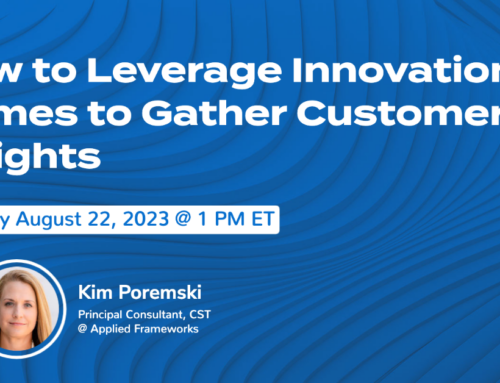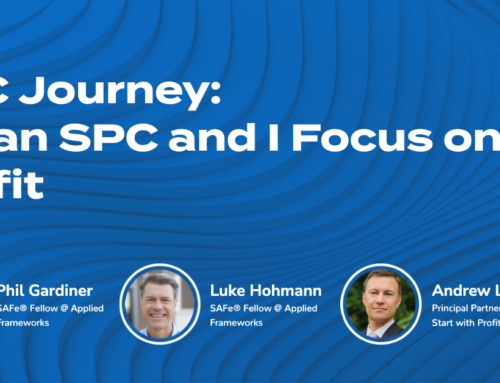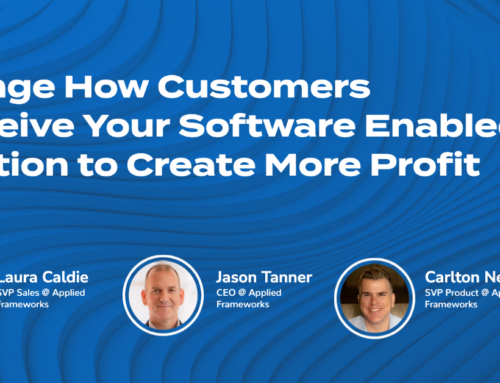Leadership Support Is Not Enough: You Need a Plan
In our experience, the number one cause of failure for any Agile adoption is lack of executive support. Even when an Agile adoption has leadership support, if there is no plan of execution the adoption can suffer as much as if there had been no leadership support in the first place.
Planning is key to any Agile initiative. This is just as true when the effort is an Agile adoption as it is for creating a new mobile app.
Agile Leadership Planning In a Nutshell
When initiating Agile product development, we advise following these high-level steps:
- Create a Vision
- Validate Customer Needs
- Create a Roadmap
- Use the Roadmap to develop a Product Backlog
- Use an Agile framework like Scrum to deliver the Product Backlog
(For more on product planning, check out our Product Playbook series.)
When planning an Agile adoption, we recommend the same general model. There are two notable changes.
- One of the first steps to planning an Agile initiative is a team event with the leaders of the organization. Executive support needs to translate into action if an Agile adoption is to succeed. The goal of this event is to determine what success looks like and how to begin.
- The second step is determining how customer validation is conducted. For a leadership team planning an Agile adoption, we recommend using the Six Thinking Hats Future Mapping framework, discussed below.
The Six Thinking Hats Future Mapping Framework
Future Mapping leverages the concept of Future Perfect Thinking to create a picture of what can be, and to back up from there to develop a map to get to the future state.
Six Thinking Hats (6TH) is a technique created by Edward De Bono and published in his 1985 book of the same name. The model is an effective parallel thinking process that helps people be more productive, focused, and mindfully involved. By working through mental models – hats – in various orders, participants can develop better results in a variety of activities ranging from idea generation and strategic planning to performance reviews.
The Six Thinking Hats Future Map leverages the 6TH model to combine idea creation, problem solving, and strategic planning into a single framework with the goal of understanding the challenges, opportunities and ideas needed to reach the desired future state of an initiative. The end result is a list of artifacts that can serve as success criteria, starting backlog, and known impediments.
For this retrospective, the Six Hats are arranged in the follow format:
- Blue Hat: Set the stage. Define the goals and objectives of the exercise.
- Red Hat: Participants check-in on their feelings around the proposed initiative.
- White Hat: Create a fact-based picture of the current state in relation to the proposed future state. Where are we right now?
- Yellow Hat: Create the vision of the future state. What does it look like when we are in the future looking back?
- Black Hat: Collect all potential barriers, blockers, and challenges to reaching the future state of the initiative. What challenges did we face and overcome to get here?
- Green Hat: Generate organization specific actions and ideas for how to successfully reach the initiative’s future state. We know what the future looks like, what are the steps we need to take to get there?
- Blue Hat: Create next step action plan.
- Red Hat: Close the retrospective.
For a complete walkthrough of the retrospective, download our Six Thinking Hats Future Mapping Framework.
Conclusion: Engage, Team, Plan
Remember, to accelerate your agile adoption you need three key Agile leadership ingredients:
- Engagement: Leadership needs to be actively engaged.
- Executive Team: Treat your Agile adoption like a Scrum project. Form a Scrum Team of executives focused on the delivery of the Agile adoption
- Plan: Create a plan by starting with future mapping. Once you have a backlog, execute following Scrum.
Would You Like More Information?
At Applied Frameworks, we are passionate about educating the next generation of Agile leaders by offering relevant blogs and webinars, valuable frameworks, continuing education programs as well as consulting. If you want to learn more about honing your Agile Leadership skills or the 6TH retrospective, please contact us today!
And be sure to follow us on Linkedin, Twitter and/or Facebook to hear when new blogs are published and webinars are scheduled on interesting Scrum and Agile topics.







